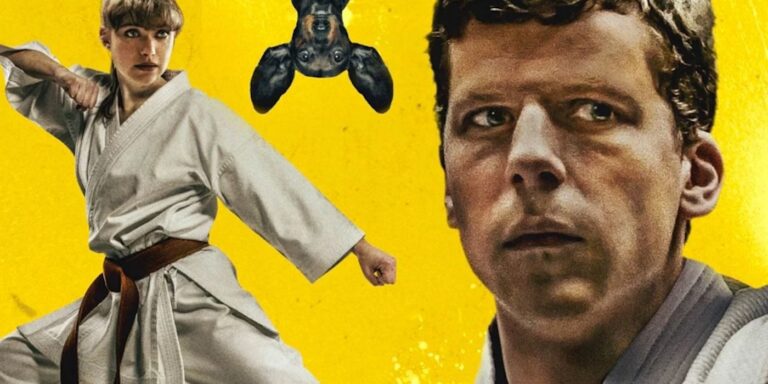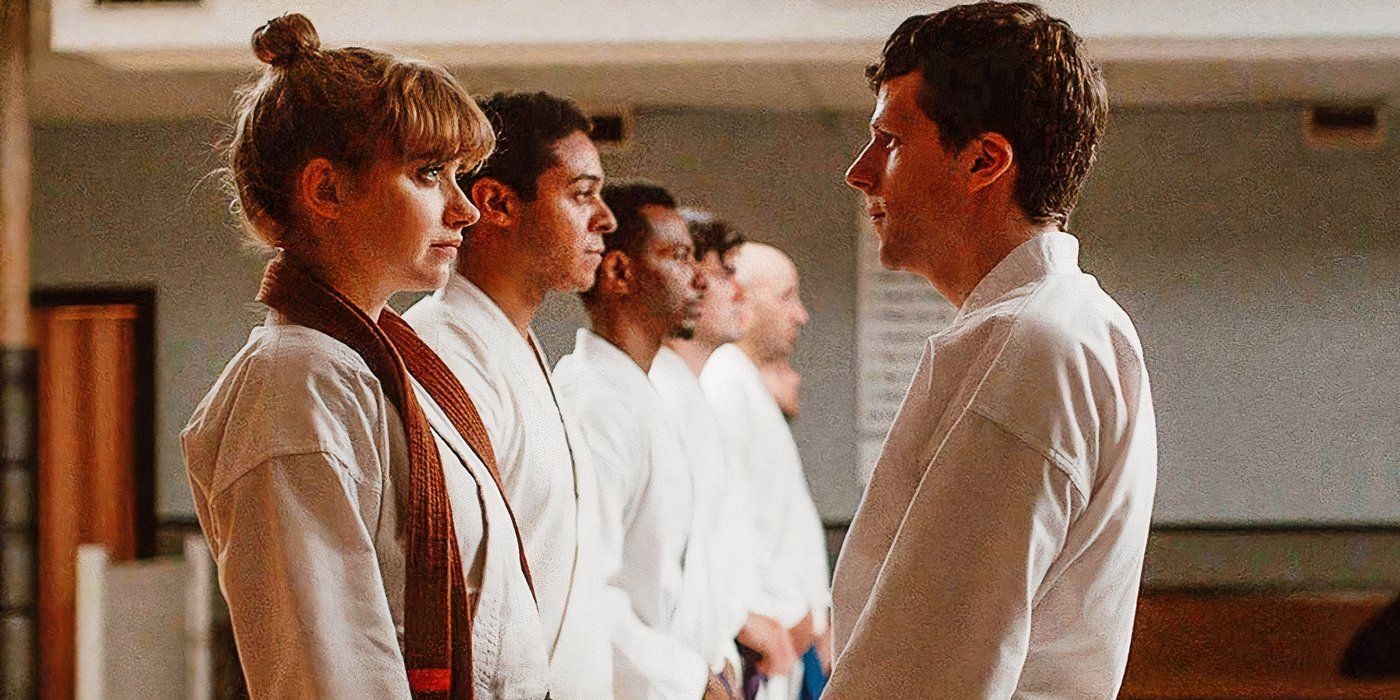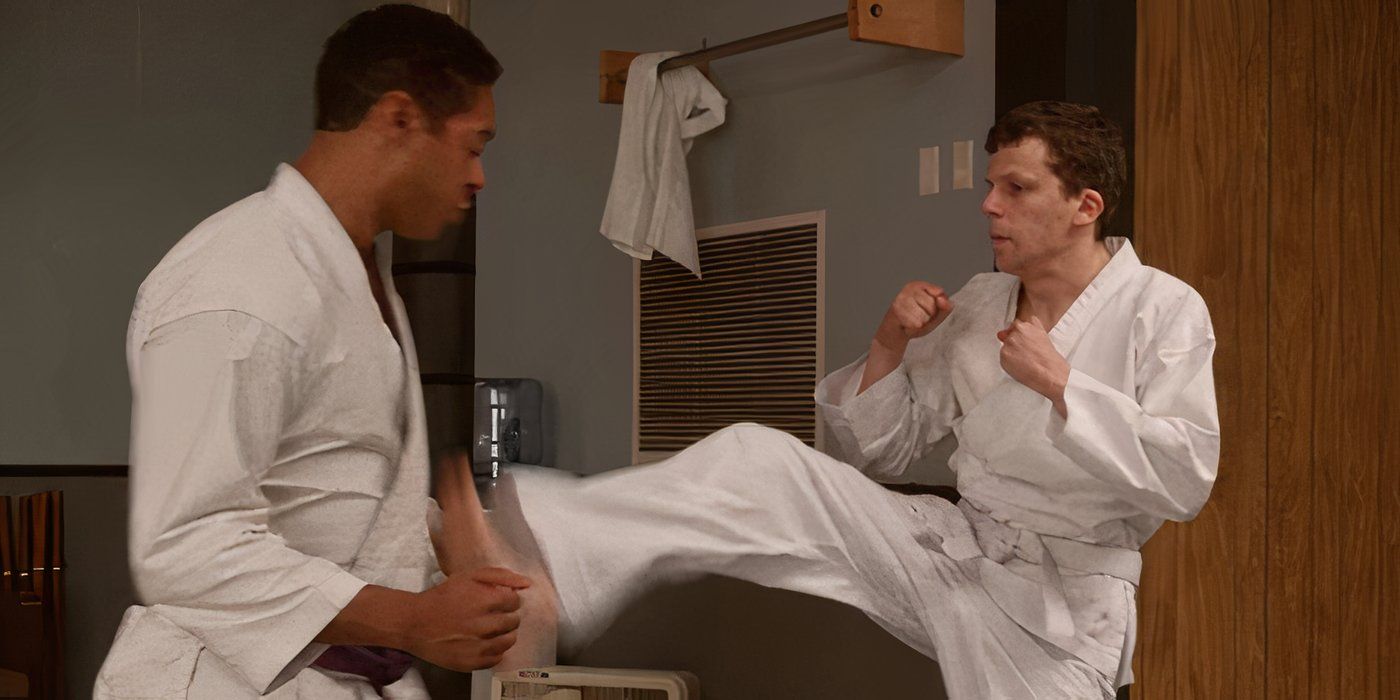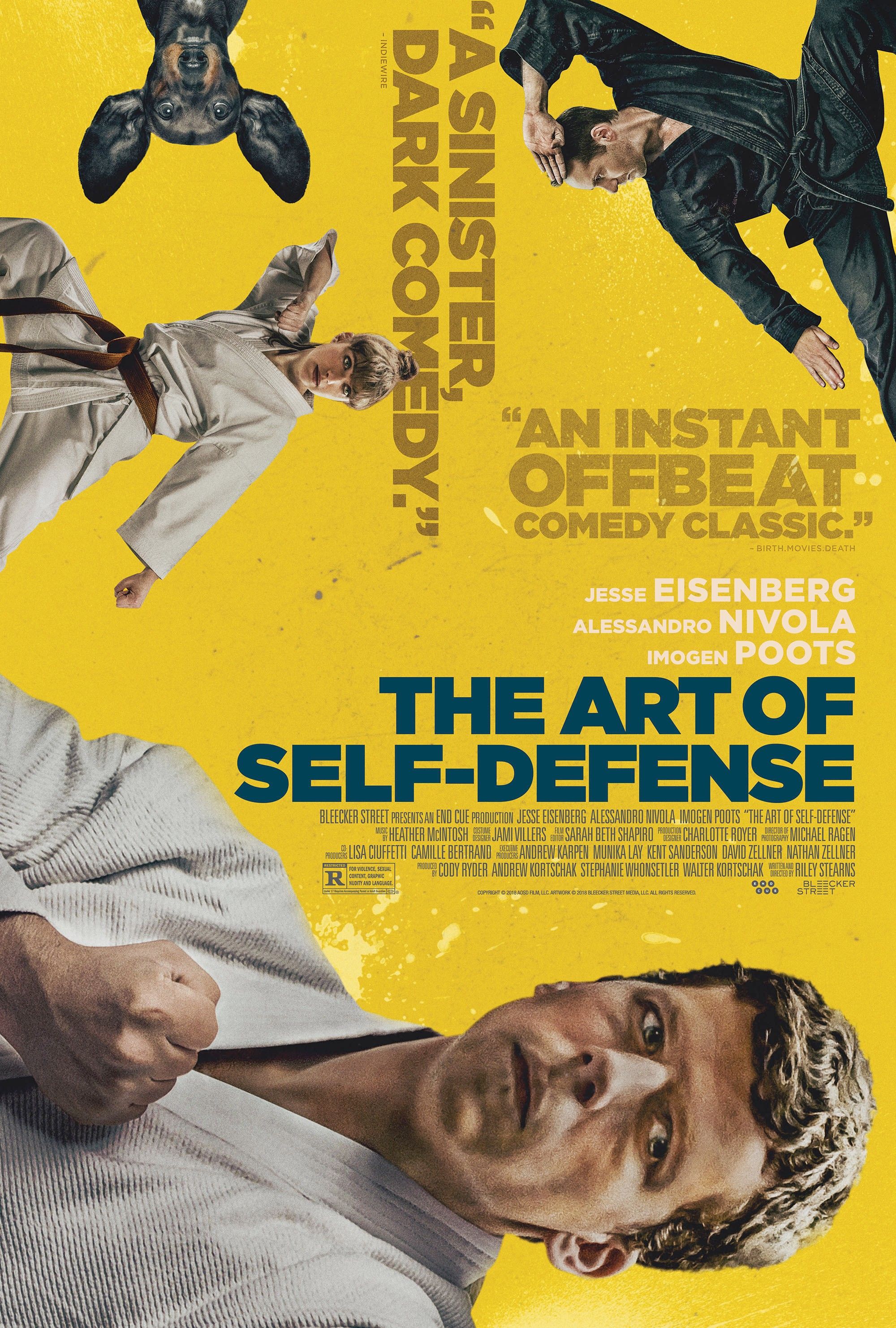Directed by Riley Stearns, The Art of Self-Defense is a unusual, darkish satire starring Jesse Eisenberg as Casey, a passive, unassertive accountant who seeks karate classes after being brutally mugged. The 2-time Oscar nominee headlines a forged together with Alessandro Nivola and Imogen Poots. Whereas the movie begins with Casey’s karate periods with Sensei (Nivola) changing into an everyday and quickly essential a part of his life, The Artwork of Self-Protection takes a pointy flip when Casey’s makes an attempt to “turn out to be what he fears” turn out to be too literal.
After changing into Sensei’s star pupil and a member of the heralded “Evening Class,” Casey turns into aware of his mentor’s sick, fanatic ideologies and begins seeing his world morph into what Sensei believes it must be. This contains the exclusion of and isolation from distracting individuals (i.e. girls) and the deadly substitute of his dachshund with a “man’s canine”: a German shepherd. Throughout this time, The Art of Self-Defense wears and tears into each Casey and Sensei’s obsessions till Stearns’ movie involves a nasty conclusion.
What Occurs In The Artwork of Self-Protection’s Ending
Casey Kills The Sensei & Takes Management
The movie pulls the carpet out from beneath the viewers when Casey not solely learns that it was Anna (Poots) and the members of Evening Class who initially assaulted him – beneath the direct supervision and steerage of Sensei – however that this kind of brutality is an everyday, misguided follow of the karate college students; one which they consider will “enlighten” their victims, because it had Casey.
Casey promptly shoots him within the face.
In looking out the dojo’s secret tools room and Sensei’s personal workplace, Casey then discovers the chief’s actual title (Leslie), in addition to his plan to transform his video recordings of the category beatings right into a compilation movie. After this revelation, Casey confronts Sensei and challenges him to a duel to the demise, and Sensei confidently accepts. Nevertheless, when the time comes, Casey promptly shoots him within the face and leaves the corpse on the mat as a trophy.
Citing the code of warriors, Casey assumes duty for the deceased grasp’s dojo. After sicing his shepherd on the coed who killed his canine (Steve Terada), Casey appoints Anna — who spared Casey’s life throughout the preliminary beating — as its chief. Eisenberg’s character, as an alternative, opts to show the subsequent crop of karate college students within the youngsters’ class.
What Sensei’s Loss of life Means
Casey Broke His Ethical Code To Cease An Evil Man
Sensei’s abrupt and brutal demise appears off-putting or contrasting to the rules introduced out all through The Artwork of Self-Protection. Whereas the artwork of the kill is one which the sufferer definitely abided by, the tactic, conversely, is one which not solely detracts from Sensei’s personal rules (ever for the reason that gun-inflicted homicide of the dojo’s legendary Grandmaster) however Casey’s as effectively.
It is a well timed proposal that makes The Artwork of Self-Protection a surprisingly apt satire.
The occasions may be simply interpreted as an ethical compromise for Casey. Whereas he could have violated his inner code of conduct through the use of a gun, he additionally removed a vicious and corrupt man, one who would by no means have stopped on his personal. This ending conjures up some daunting questions over males’s function in disestablishing evil energy, one being, “ought to these able to appropriate or affect what’s unsuitable achieve this?” It is a well timed proposal that makes The Artwork of Self-Protection a surprisingly apt satire.
The Actual Which means Of The Artwork Of Self-Protection Ending
Casey Lastly Stood Up For Himself
The Artwork of Self-Protection ending noticed Casey lastly rise up for what was proper, even when he broke his ethical code. Casey knew that Sensei was hurting individuals and had killed individuals as effectively. Casey by no means actually wished “revenge” as a lot as he wished to study to face up for himself within the face of bullies and stress. He, nevertheless, realized that he had no different means out. Sensei would proceed to harm individuals, and there was no approach to cease him. When he agreed to battle to the demise, Casey had no alternative however to tug the set off.
How The Artwork Of Self-Protection Ending Was Acquired
The Film Was Polarizing For Critics & Followers
When reviewing The Artwork of Self-Protection, critics praised the script, performing, and story, awarding it a “Licensed Contemporary” 83% score. Nevertheless, audiences weren’t as impressed, solely giving it a 63% rating. One audience member wrote, “Like most darkish comedies, this was a really intelligent commentary on society. In contrast to most motion pictures that have a look at poisonous masculinity, this one appears to grasp it.” As for the skilled critics, Christy Lemire of Roger Ebert.com loved the movie, writing:
“The Artwork of Self-Protection” doesn’t construct to the type of feel-good finale that you simply’d anticipate from a extra conventional sort of film concerning the transformative energy of sports activities. However it undoubtedly sweeps the leg in its personal means.”
Followers additionally took to Reddit to debate The Artwork of Self-Protection ending. The OP wrote, “It is each unsettling and fascinating to see karate getting used as a medium to painting poisonous masculinity. Finally, I appreciated the message it tried to convey.” Just a few followers mentioned the film was too darkish for his or her liking. Nevertheless, one other Redditor mentioned that this film was correct, writing, “I used to be compelled to confess that a variety of the poisonous habits such as you see within the film is just not remarkable in dojo (and plenty of different areas) within the US… I’ve definitely seen misogynistic habits.“




